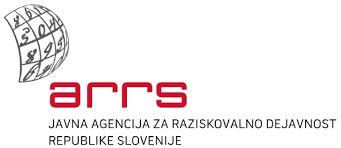TITLE:
J2-3035 Synthesis of alkali activated materials with microwave heating
DESCRIPTION:
Alkali activated materials (AAM) are a promising alternative to conventional building materials (cement, concrete, ceramics) because the energy required to produce AAM is lower, i.e. preparation time and temperature are lower, and consequently also carbon footprint [1,2]. Materials that can be used as precursors must contain sufficient amount of Si and Al in the amorphous phase and as few elements of group 1 as possible, which are added later with the alkali activator since the final ideal ratio of elements of group 1:Al:Si of all of the ingredients together is 1:1:1.9 [3]. The selected Al:Si ratio can be achieved by mixing the appropriate precursors. The most used precursor is metakaolin, which is considered as the standard in alkali activation [4]. While for alkali activator mostly used are NaOH, KOH, Na-water glass and Kwater glass. First phase of the reaction in the alkaline medium, dissolution of the precursor, is followed by the transport of the elements, alumosilicate monomers formation (binding of Al and Si with O into tetrahedra), polycondensation (and dehydration) into the alumosilicate network, which is mostly amorphous [5]. The first reaction phase is followed by the curing at low temperatures (below 100 ° C), i.e. further dehydration to the final product, i.e. AAM. AAM has already been implemented in real-life building industry in Australia, first for an airport runway in Brisbane [6], and then for a public building in Queensland [7]. The aim of this project is to test the influence of electromagnetic waves in the microwave spectrum on different phases of AAM synthesis, both initial, i.e. when microwaves volumetrically increase the temperature of the alkali activated mixture, thus speeding up the reaction, shortening the synthesis time and lowering the used energy [8], as well as in the later stages when microwaves affect dehydration (drying) and sintering. To achieve these goals, the project will focus on: - Chemical and mineralogical analysis of metakaolin, - Determination of the optimal mixture of precursor and alkali activators [9], - Selection of a microwave oven for synthesis of AAM and selection of suitable moulds that can be used in a microwave oven, - Optimization of variable parameters of microwaves at all stages of AAM synthesis to achieve optimal mechanical properties of AAM, - Implementation of the acquired knowledge with using waste material for the precursor. The project is divided into 5 work packages related to the specific project objectives which will be performed by ZAG - Department of Materials, KI – Department of Inorganic Chemistry and Technology. Both groups already have extensive experience in either preparation and charcterization of AAM from different precursors or analysis of materials with NMR . The acquired knowledge will be the basis for the development of various products with better mechanical properties, prepared in a shorter time with less invested energy. The project will thus provide new interdisciplinary knowledge that will combine technology and environmental aspects.
DURATION:
2021/10/01 - 2024/09/30
FUNDING:
Slovenian Research Agency
MORE:


